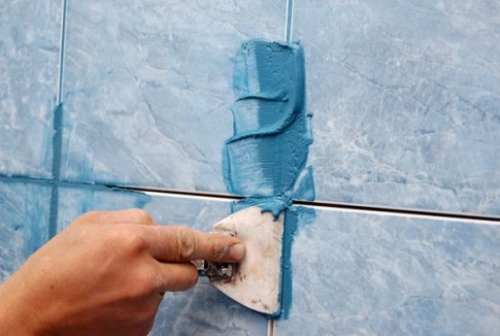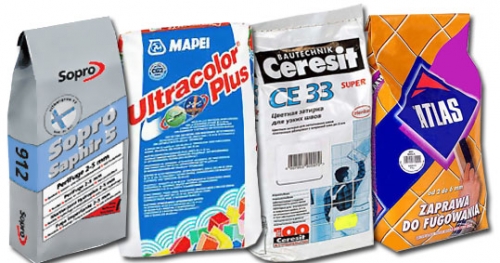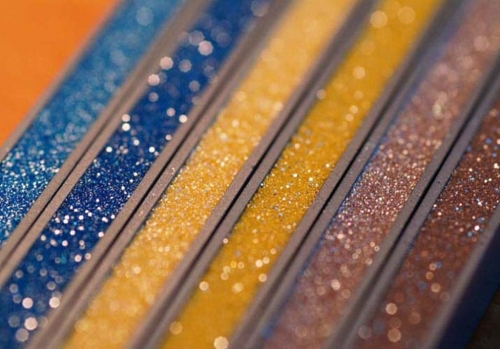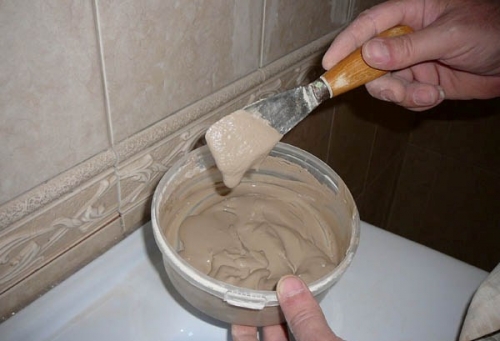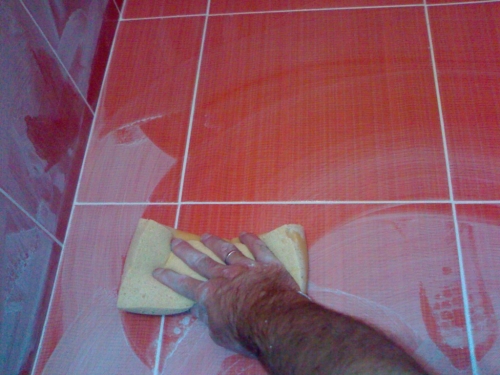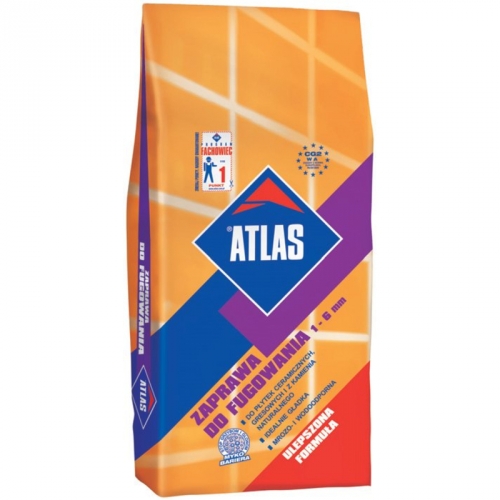Modern construction sites are not without the use of mounting foam, ...
|
|
Formwork is a design of boards or slab material for pouring concrete .... |
Concrete bases are durable and durable, but with a long ... |
Grout for tiles: consumption, advantages, features of use
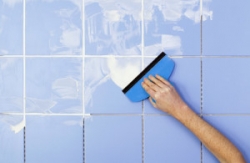
Today you can rarely meet a room where tiles would not be laid. Physical and technical characteristics make it popular finishing material. The process of filling out a tile joint with special means is the final stage.
Content:
- What is the grout of the stitches for
- How to choose a grout for tiles
- Grinding tiles
- How to make a grout of the stitches
- Removal of grout from tiles
- Grinding tile consumption
- Cracking the seams between the tiles
- Manufacturers of grouts for tiles in the bathroom
What is the grout of the stitches for
- Grout is a mass of homogeneous composition made on different foundations. It is used to fill the joints formed between piece elements of ceramics, natural or artificial stones. It is offered in the form of dry powder or a finished mixture.
Grouting tiles photo
- The grouting prevents the penetration of dust, moisture between ceramic elements, thereby not allowing the adhesive composition and mold to form. The life of the entire coating was dependent on how correctly the grouting mixture was selected and correctly carried out the work.
- Among other things, the mixture gives the surface a complete look. It is white and multi -colored. The shade is selected to match the tile or a contrast is created. With its help, the most inconspicuous finishing material will acquire decorativeness.
When choosing a grout between the tiles, it is taken into account:
- the basis of the composition;
- for external or internal use;
- color;
- manufacturer.
High -quality grouting ensures the tightness and hygiene of the lined surface as a whole, significantly prolonging its service life.
How to choose a grout for tiles
The mixture for grouting seams must be purchased from well -known manufacturers. Otherwise, even elite ceramics will look sloppy. Cheap putty will quickly crumble or crack due to the low quality of the raw materials used.
The market is offered a grout, the basis of which may consist of cement or resin. Each type has 2 subspecies.
Cement grout for tiles
- The mixture consists of Portland cement with the addition of various additives. It is characterized by fluidity and a long period of setting. It is diluted, as a rule, with water, in some cases latex is used. The grout is designed for seams equal to 3-5 mm.
- The powder is made on the basis of Portland cement and fine -grained sand, which gives strength. Such a product is used to fill the seams with a width of more than 5 mm. And the larger the distance between the tiles, the larger the sand fraction should be. Available in white and gray colors.
Small grouts
- This material contains epoxy compounds, hardener (polyamine, etc.) and coloring pigment. The finished grout is characterized by high indicators in moisture resistance, mechanical strength, durability. A two -component grout for tiles is not subject to the formation and development of fungi and mold, has immunity to sharp temperature jumps.
- Previously, epoxy grout for tiles was used in industrial premises in connection with difficult work and due to high cost. Today, more and more often, the consumer chooses it to protect facing in interiors of houses or apartments. It can be transparent or have a metallic shine. The use is appropriate for seams of more than 7 mm.
- The grout based on thermoreactive oligomers (synthetic resins) does not contain a drop of water. Due to which it is characterized by chemical stability, including strong acids. The grouting mass is indispensable when arranging surfaces in industrial premises. She perfectly seals the seams.
- But working with this composition is quite difficult. Before applying, the surface of the tiles is protected by a wax composition. Excess grouts are removed immediately by means of hot steam. The color of the composition is only black.
Grinding tiles
The choice of shade is selected exclusively by its own taste preferences. The manufacturer offers a wide range with a variety of colors.
Before acquisition, the following rules should be guided.
- White color is suitable for any tile shade. However, this universal version has one significant drawback of stinkiness. After a certain time, it will become dirty, nullifying all the efforts of the repair.
- A light tone of grout for a similar tile will create a sensation of a whole surface. The mixture is much darker than the finishing material will emphasize the geometry, highlighting each tile separately.
- Before starting grouting, check in an inconspicuous place, how the grout will look in kind. Wait when it completely dries out the grout changes the shade. If the result was satisfied, then you can safely wipe the seams throughout the area.
- If the area of \u200b\u200bwork is small or it is necessary to wipe the seams in different rooms, and there will be a lot of purchased packaging, then it is better to purchase a white grout. If necessary, a small amount can be painted in the desired shade using the corresponding kner.
- Such an amount of a mixture is bred that will be needed for the seams of the entire tile masonry. Otherwise, it will definitely not be possible to achieve the same shade in an additional portion. But in this case, you will have to work very quickly, since the finished composition hardens within half an hour.
How to make a grout of the stitches
- Before work, the surface is carried out. It is cleaned of dirt, dust, construction solutions. The edges of the tiles and seams are freed from the remnants of glue. Next, the base should be lit, and then wiped with a damp rag in such a way that there are no stains.
- Such manipulations will make it possible to quickly and efficiently fill the seams, and then easily remove surplus. Shortly before applying the composition, the surface is wiped with a damp cloth, this will much improve adhesion.
- The grout should be kneaded, guided by the recommendations of the manufacturer. All components are thoroughly mixed until the mass is uniform in consistency and color. As a rule, the finished solution should be used within 20-30 minutes. At the end of this time, it is unsuitable for further use.
- The seams are filled with grouting by means of a rubber spatula. After 5-7 minutes, the tiles are wiped with a slightly damp sponge or a rag. Too wet fabric can wash the grout, and also change its color. Traces of grout are removed after its drying out.
Grouting tiles video
Removal of grout from tiles
- Typically, a grouting mixture from a ceramic surface is easily wiped with a tissue moistened in water. Firmly dried mass is removed with plastic scrapers or brushes with polymer stubble. Metal products are not suitable for these purposes, they irrevocably spoil the appearance of the tile.
- Traces of highly dried grouts are eliminated using special acid -containing solutions. Work should be carried out in gloves and with open windows, doors, since cleaners give harmful evaporation.
- The solution is used in diluted or undiluted. It is applied to the surface and left for 5 minutes. Then the fabric is taken and the grout is wiped with a small pressure with a light pressure. After that, the tile is washed several times with clean water. With severe pollution, it is allowed to carry out such work for 3 days 1 time.
- It is worth noting that acid -based products are suitable for ceramic, natural and polished porcelain tiles, clinker, stone (exception is limestone, marble). They will cleanse the surfaces of lime, salts, tile glue and other construction solutions.
- In cases where the mass cannot be removed even through chemicals, the mechanical method is used. Here is a drill and a disk with diamond spraying. First you need to try out the removal in an inconspicuous place. If the grout leaves, and the surface of the tile is not damaged, then the work continues in a given mode.
Grinding tile consumption
- Before starting to wipe the tile with grout, it is important to calculate the required amount of material. In such cases, you do not have to waste time purchasing additional packaging or vice versa, ask the seller to accept surpluses.
- Consumable of the trial mixture per 1 square. m. Determine parameters such as the width of the seam and the dimensions of the tiles. The skill of the tile is also of considerable importance. Famous manufacturers indicate the average indicators on the product.
- To determine the amount of grout required for filling out 1 square meter. m. tile masonry can be used.
| Tile size (mm) | Width of the seam (mm) | ||||||
| 2 | 3 | 5 | 8 | 10 | 15 | 20 | |
| 20x20x4 | 1,3 | ||||||
| 50x50x4 | 0,5 | ||||||
| 100x100x6 | 0,6 | 1,0 | |||||
| 100x100x10 | 1 | 1,6 | |||||
| 100x200x6 | 0,4 | 0,7 | |||||
| 100x200x10 | 1,2 | 1,9 | 2,4 | ||||
| 150x150x6 | 0,4 | 0,6 | |||||
| 200x200x8 | 0,4 | 0,6 | |||||
| 120x240x12 | 1,2 | 1,9 | 2,4 | ||||
| 250x250x12 | 0,8 | 1,2 | 1,5 | ||||
| 250x250x20 | 1,3 | 2 | 2,6 | 3,8 | 5,1 | ||
| 300x300x8 | 0,3 | 0,4 | 0,7 | 0,9 | |||
| 300x300x10 | 0,3 | 0,5 | 0,9 | 1,1 | |||
| 300x300x20 | 1,1 | 1,7 | 2,1 | 3,2 | 4,3 | ||
| 300x600x10 | 0,2 | 0,4 | 0,6 | 0,8 | |||
| 330x330x10 | 0,3 | 0,5 | 0,8 | 1 | |||
Or do calculations yourself using the formula:
- (A+B)/(AHV) KhSHDX1.6 \u003d kg/m.
- And the length of the tile (mm)
- Tile width (mm)
- With the thickness of the tile (mm)
- D Width of the seam (mm)
- 1.6 coefficient
As an example, we use floor tiles of popular sizes 330x330x10, which is laid with a seam of 5 mm:
- (330+330)/(330x330) x10x5x1.6 \u003d 0.48 kg/m. Washing out the result, we get the flow rate of 0.5 kg for each square meter of tile masonry.
Cracking the seams between the tiles
Sometimes even an expensive and proprietary grout begins to crumble.
The reasons can be:
- a large amount of water in the diluted mass. Over time, water evaporates, which leads to a decrease in dry composition;
- some types of tiles are able to absorb a lot of moisture from the grout, as a result of which there is a decrease in the mass of grout;
- the base under the tile is not leveled and, accordingly, the elements begin to walk, which leads to cracking of the layer of solution;
- the temperature regime is disturbed. Grout should be carried out at room temperature with a normal level of humidity;
- incorrectly selected grout. Before purchasing the composition, consult the sellers or carefully read the manufacturer's instructions.
The following tips will help to avoid cracking the grout:
- the mass is mixed manually, if desired, you can use a drill with a special nozzle. It is necessary to work at low speeds;
- do not neglect the preparation of the surface. It should not have traces of dust, fat and other pollution;
- if the facing material has increased absorption, then the seams and edges of the tiles are moistened before filling;
- to accelerate drying, heaters, manual and building hairdries cannot be used.
Manufacturers of grouts for tiles in the bathroom
The market presents a wide selection of grouting mixtures of various purposes from both domestic and foreign manufacturers. In any case, the quality will be at a height, the only difference is the cost of products. From well-known manufacturers can be noted:
Timp
- The Russian-German company offers a series of grout mixtures intended for certain requirements. For example, tile 3 is an optimal remedy for seams in the range from 2 to 6 mm.

- There is a special grout for flooring (with seams of 3-15 mm). Its difference is high fluidity, which allows you to quickly fill fugues without the formation of voids. The solid components that make up the mixture provide increased strength, wear resistance and resistance to aggressive environments.
- Solutions with improved waterproofing properties are popular. They serve to fill quite wide fugs from 2 to 20 mm. Such funds are suitable for facing showers, bathrooms, basements, pools. In the grout, there are biocide supplements, as well as substances that endow the mixture with dirt -repellent qualities.
Ceresit
- A wide range of grouts makes it possible to choose the option for the necessary parameters. Depending on the composition, they perfectly tolerate increased humidity, temperature changes and deformation. Among the advantages, antifungal and water -repellent properties can be noted.
- For cladding stable surfaces, CE-33 is used. It is suitable for narrow seams (up to 5 mm). Distribution of moisture allow it to be used in kitchens and in bathrooms. Frost -resistant additives expand the scope of grouting up to external work.
- The grout mixture of the CE-40 is ideal for deformation surfaces, where the tiles are laid with seams up to 10 mm wide. The elasticifier included in the composition retains the integrity of filled fugues at high and low temperatures. Therefore, it is suitable for both external work and when arranging warm floors in residential premises.
- The products of this company have long established itself as an excellent combination - quality. So, the price of grout for tiles based on cement costs about 150 rubles/pack.
Atlas
- The Polish concern offers 2 types of grout mixtures for small fugs (1-6 mm) and seams with sizes from 4 to 16 mm. Both types are characterized by high adhesion, resistance to mechanical influences, resistance to moist conditions. A wide colors will satisfy the taste of even the most demanding consumers.
- Materials are characterized by high elasticity and resistance to temperature changes, which allows them to be used in the decoration of the interior, when designing facades and arranging the landscape.

